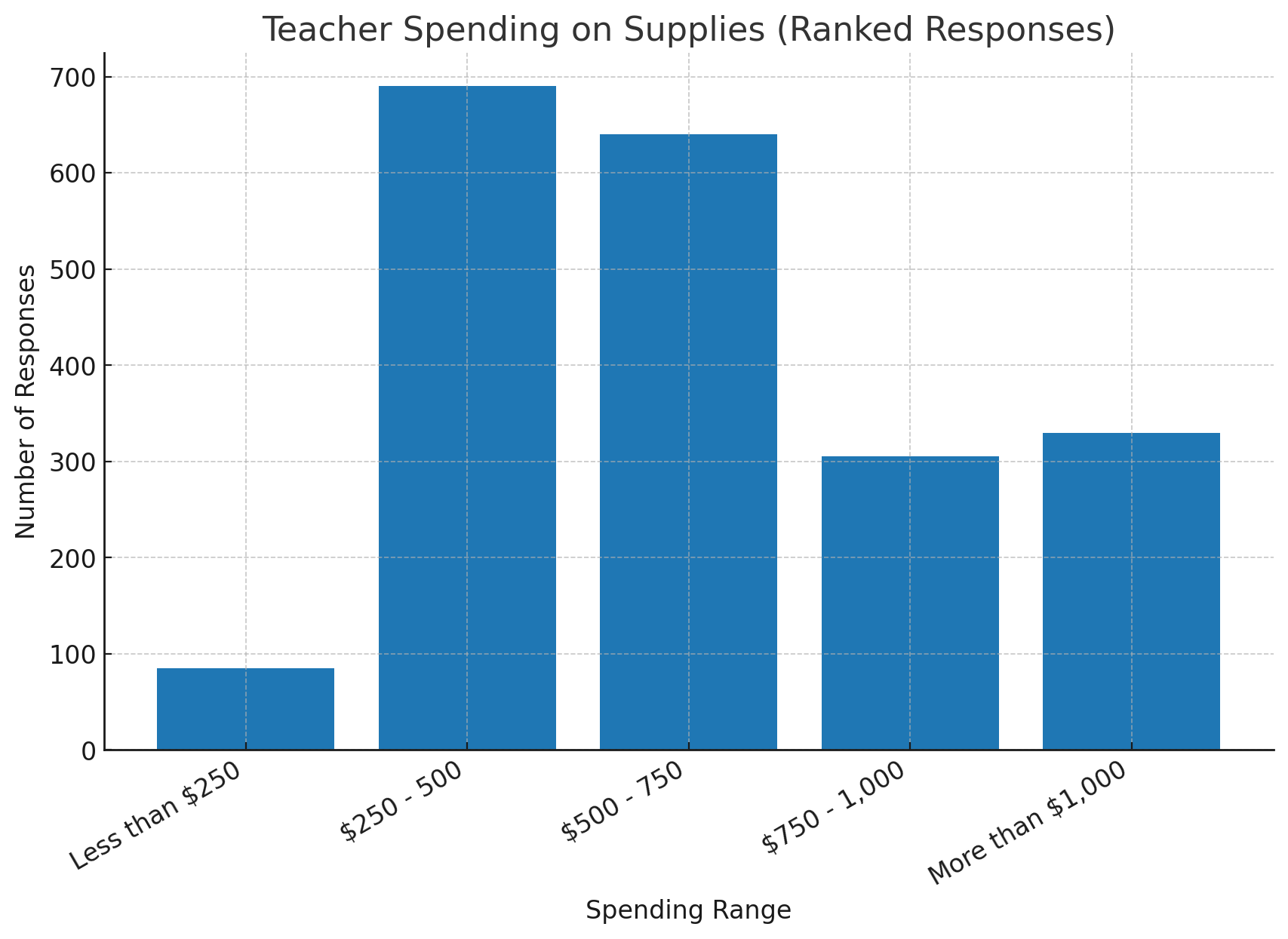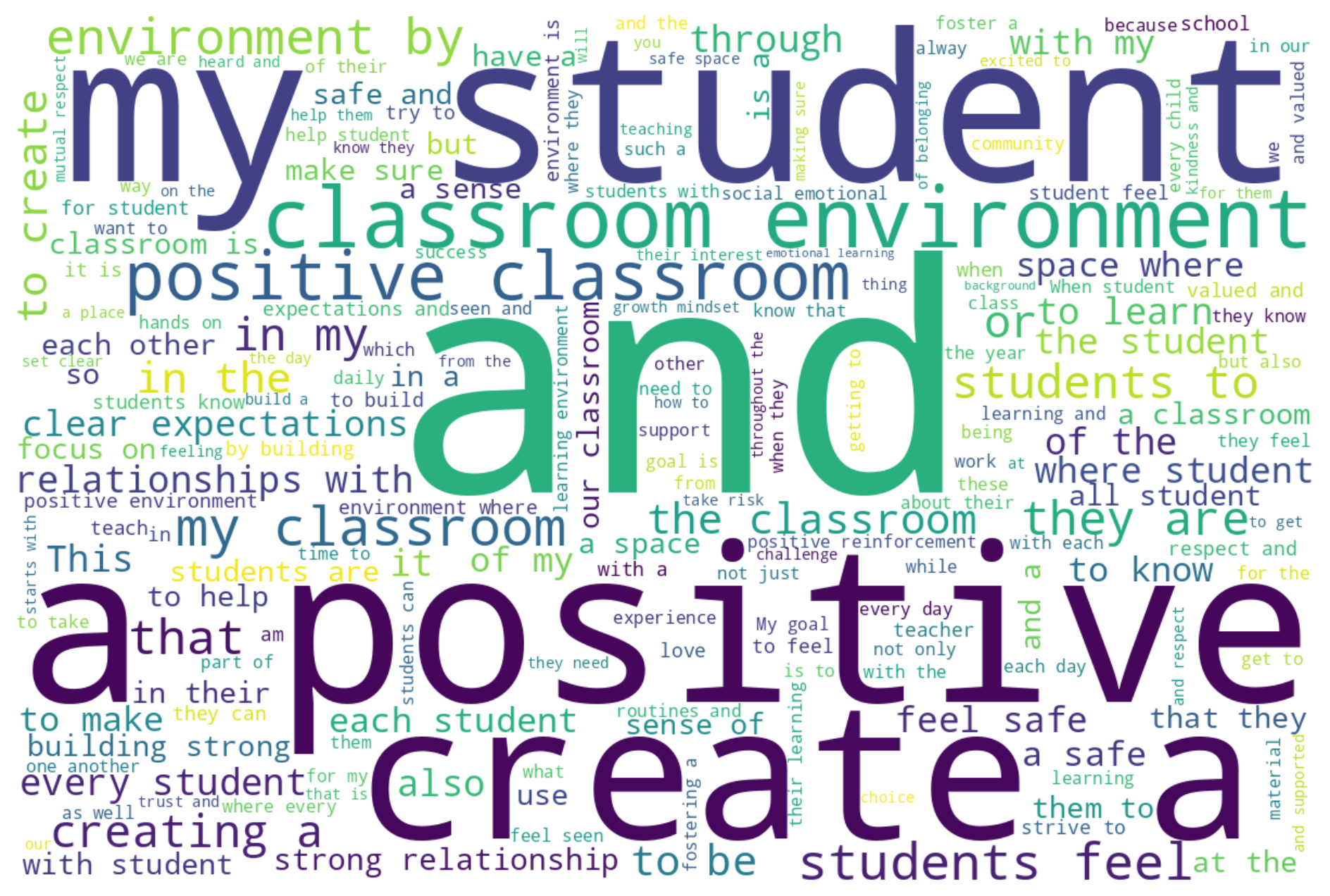Top Classroom Supply Needs for 2025-26: Insights from Over 2,000 Teachers
As the 2025-26 school year begins, thousands of K-12 teachers across the country are voicing a clear message: basic classroom supplies are still the most urgent need, and teachers are often buying these supplies with their own money.
Since 2011, the National Life Group LifeChanger of the Year program has recognized over 8,500 educators across 2,300+ school districts, awarding more than $800,000 in cash prizes and grants. This year, more than 2,100 educators applied to LifeChanger of the Year’s Back-To-School Supply Grant program between July 1 and August 15, 2025. The program will award 10 teachers with a $700 grant to help cover essential classroom expenses.
“At National Life, we recognize that teachers are the backbone of our communities. Too often, they shoulder the cost of basic supplies that should be readily available for every student,” said Matt Frazee, Executive Vice President and Chief Marketing Officer of National Life Group. “Through our LifeChanger of the Year recognition program and Back-To-School Supply Grant program, we are honored to stand alongside teachers, helping to ease that burden and ensuring students have the essentials that make a real difference in their day-to-day learning.”
Every applicant reported spending personal funds on classroom supplies. On average, teachers spend $623 annually, with some reporting costs exceeding $1,000.
What Teachers Need Most in 2025-26
An overwhelming 80% of applicants emphasized the need for everyday classroom materials critical for students but not always readily available. These include:
Notebooks and graph paper
Pencils, erasers, and highlighters
Dry-erase markers and clipboards
Folders and binders
Teachers noted that access to these supplies helps reduce stress, prevent disruptions, and ensure equity for students whose families may not be able to afford them. Many also requested healthy snacks and personal hygiene items to support students’ well-being.
Beyond Basics: STEM, SEL, and Inclusive Tools
While basic supplies topped the list, teachers also highlighted the need for specialized resources to enhance learning:
STEM and Hands-On Learning
Educators requested science kits, engineering tools, and makerspace materials to promote curiosity, problem-solving, and real-world application.
Literacy and Social-Emotional Learning (SEL)
Teachers emphasized the importance of books and SEL tools that help students build confidence, regulate emotions, and connect learning to their lived experiences.
Many teachers noted the need for more sensory materials, adaptive tools, and specialized supports to help build inclusive classrooms where all students, including those with sensory and special needs, can thrive and engage. In addition, furniture and equipment such as standing desks, wobble stools, and cushions, were seen as important resources for enhancing student comfort, focus, autonomy, and engagement in learning.
Out-of-Pocket Spending Remains High
This information underscores the financial burden educators face and the importance of programs like LifeChanger of the Year in bridging the gap.
Creating a Positive Environment
When asked how they create a positive classroom environment for their students, teachers’ responses included a blend of encouragement, strong relationships, emotional safety, engaging instruction, structured routines, and personal modeling. These themes work together to ensure that students feel valued, motivated, safe, and ready to learn. The top six categories mentioned by teachers in their responses are below:
1. Positive Reinforcement & Motivation (69%)
Many teachers highlighted the importance of celebrating successes, offering encouragement, and reinforcing positive behaviors. Strategies include praise, recognition of effort, reward systems, and celebrating growth to build student confidence and motivation.
2. Relationships & Respect (63%)
A strong recurring theme is building respectful, trusting relationships with students. Teachers focus on getting to know students personally, showing empathy, listening, and establishing a culture of mutual respect to make students feel valued.
3. Emotional Safety & Belonging (59%)
Teachers emphasize creating a safe and inclusive space where students feel they belong. Practices include daily check-ins, affirmations, kindness routines, and addressing social-emotional needs to ensure all students feel supported and cared for.
4. Student Engagement & Collaboration (43%)
Active learning strategies—such as collaborative projects, hands-on activities, movement, and culturally relevant materials—are frequently mentioned. Teachers aim to engage students through variety and interactivity, which helps build a more positive classroom culture.
5. Clear Expectations & Routines (34%)
Teachers describe how structured but flexible routines and clear expectations reduce uncertainty and create stability. By setting boundaries and predictable classroom management practices, students feel secure and know what is expected of them.
6. Modeling & Teacher Behavior (23%)
Many educators stress the importance of leading by example. By modeling respect, empathy, patience, enthusiasm, and accountability, teachers set the tone for classroom culture and encourage students to adopt similar behaviors.


